Sony's First Android-Powered Walkman Is Damn Compelling
by Carlos Zahumenszky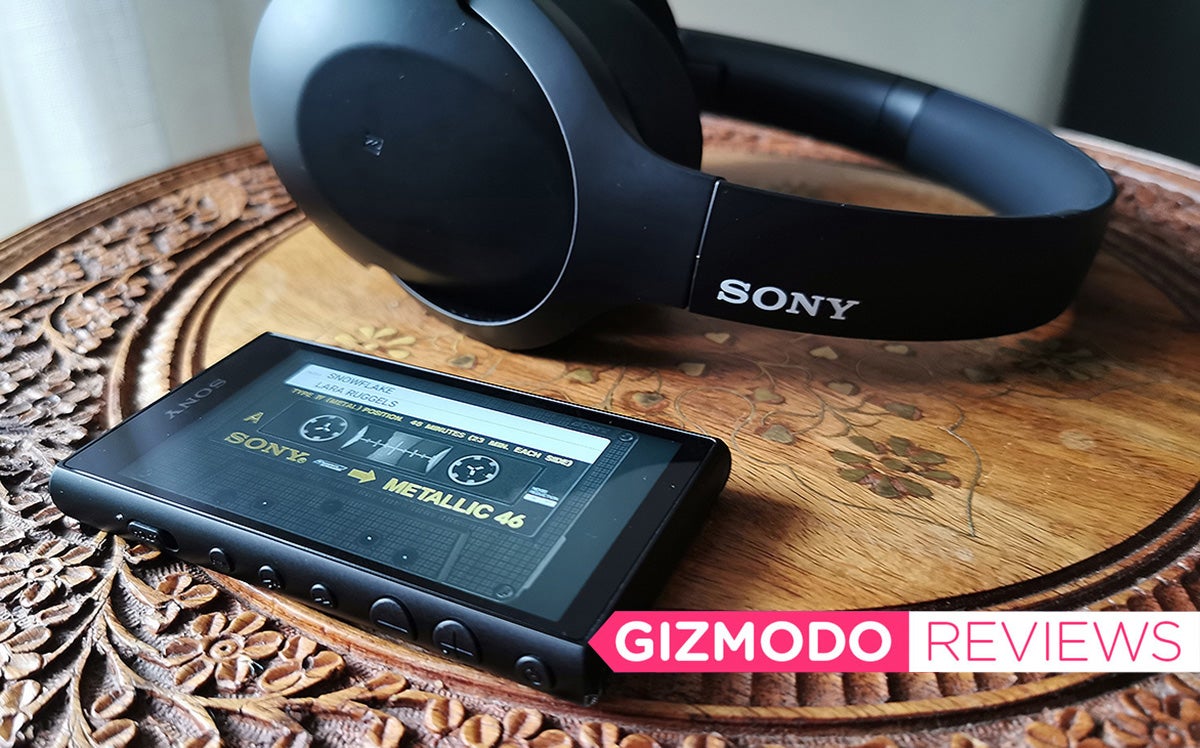
Why would anyone want a Walkman in the streaming age? That’s the question I asked myself when I first fiddled with the small Sony NW-A105. One month later, I’ve learned enough about the music player to answer that question and many more. Sometimes its good to cut out the distractions of texts and phone calls and just embrace a tiny device that pumps out high-quality tunes. As the first Walkman device from Sony with Android built-in the Sony NW-A105 isn’t just good for music though, it’s also a great alternative to you phone for long vacations.
The NW-A105 is the latest addition to the Walkman music player family. Sony presented the device at IFA 2019. It costs $599, and although this might sound strange, it’s the cheapest Walkman model that Sony has available right now.
The Sony WM1Z, for example, is the Walkman line’s high-end model. It’ll cost you $1,349 (and $4,299 if you want the Signature Series model.)
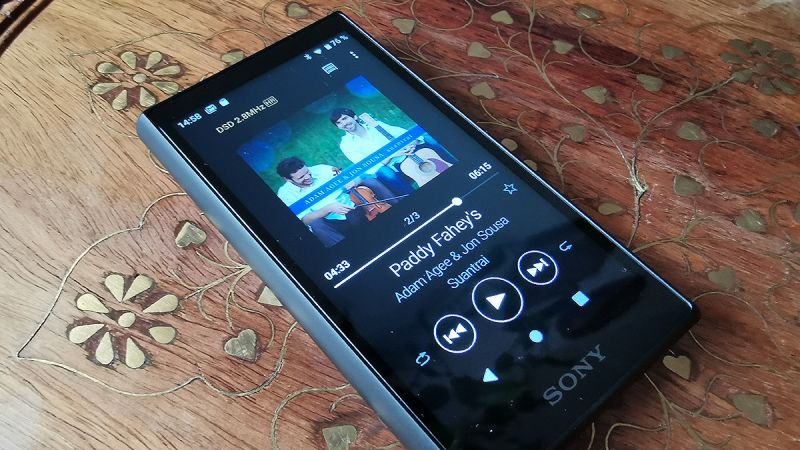
Sony Walkman NW-A105
WHAT IS IT?
The latest iteration in the legendary Walkman Series, now with Android 9 on board.
PRICE
$599
LIKE
Superb audio quality, physical buttons and great sound control options. An Android device so small you will want to take it with you.
NO LIKE
Maximum volume is not so loud, battery is underwhelming and you end up needing to buy a charger and a MicroSD Card.
Let’s get back to the NW-A105: It looks like a small smartphone. In terms of size, it’s 2.21 x 3.90 x 0.44 inches (55.9 x 98.9 x 11.0 mm). Additionally, the Walkman weighs about 3.6 ounces and is really comfortable to carry around, especially for those of us used to walking around with huge phones. If any of you have owned a Walkman A45 or A55, you’ll have a good idea of the size of the NW-A105 because all three are almost identical in this aspect. However, the touch screen, which is about 3.6 inch long and 1280 x 720 pixels, takes up the entire front side of this new model.
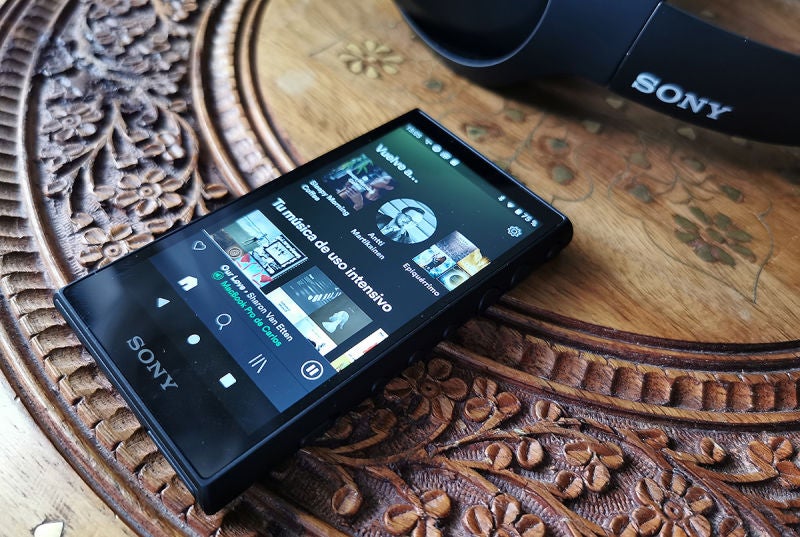
I know that the screen isn’t something really important when it comes to a music player, but this one is excellent. You can see it clearly from all angles, even when you’re facing the sun, and the legibility of text on the screen is fantastic.
The right side of the device has a series of physical buttons (power, volume, play/pause, skip forward and skip backward) and a switch to block them all in case you have the Walkman in a tight pant pocket and don’t want to press anything by accident. One note about these buttons: They’re designed to work seamlessly with Sony’s Walkman application (see below.) The skip buttons haven’t worked for me on Spotify or Google Music, but they did work on Tidal. The volume, pause, and play buttons have worked regardless of the application I was using.
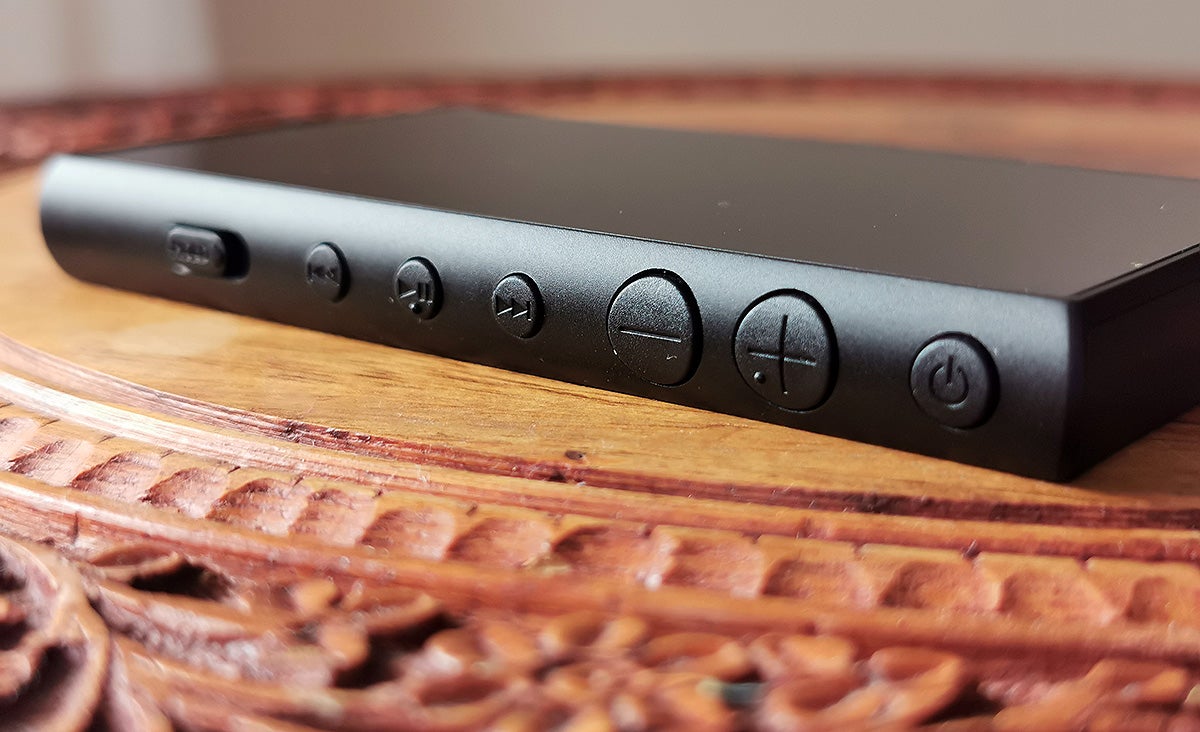
On the bottom part of the Walkman there’s a 3.5mm headphone jack, a USB-C port to charge the device and a slot for MicroSD cards with up to 2TB of storage capacity. Oddly, the box comes with a USB-C cable, but no charging brick. It doesn’t come with an audio cable or headphones, either, but there’s at least a reason for that (more on that below.)
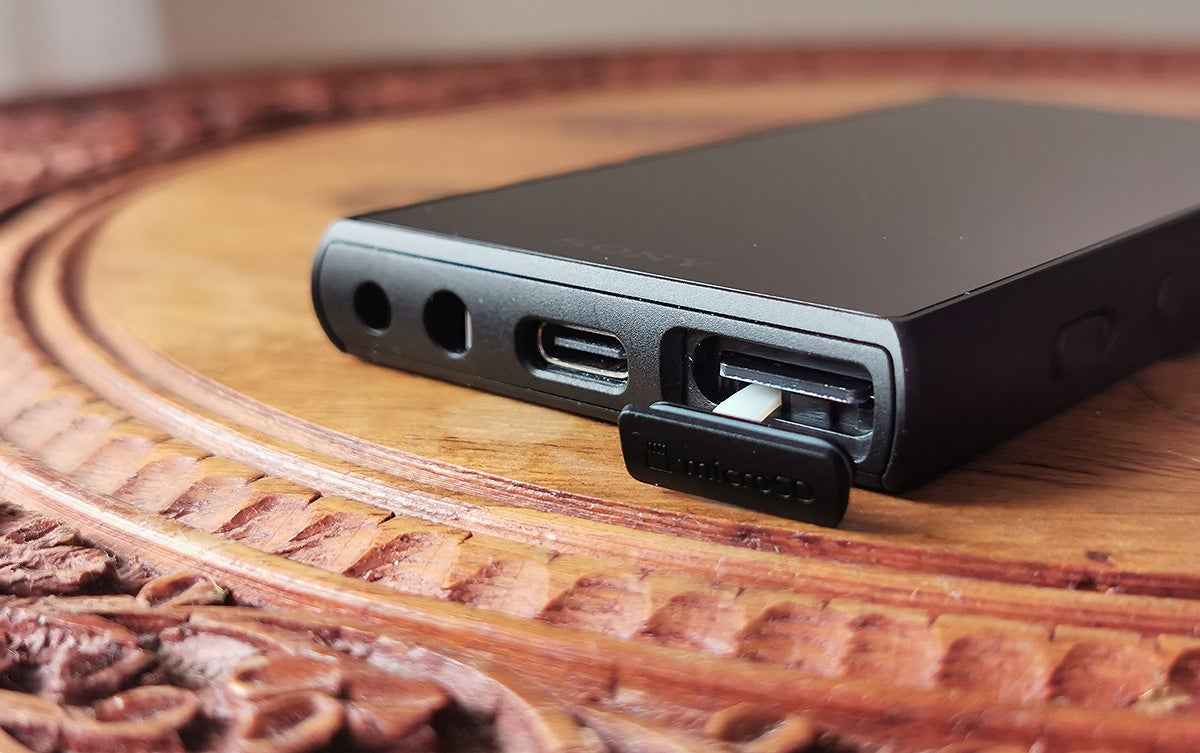
On the inside, the NW-A105 has an ARM Cortex-A53 Quad Core processor (Sony does not reveal the manufacturer) and 4GB of RAM. It’s enough to manage such a small screen. In general, Android runs smoothly on the device, although once in a while it’ll take longer to open certain heavy applications.
The Walkman’s internal storage is 16GB, but Android takes more than half of that (almost 10GB). This is bad news given that a hi-res DSD album can easily pile on 2GB, which leaves us with only enough space to keep a handful of albums on the Walkman’s internal memory. The good news is that the slot for microSDHC and microSDXC cards makes up for this shortcoming, although that does mean that you’ll have to pay for one of these cards. A 64GB card will set you back about $15 to $30.
Streaming music vs. music files
The NW-A105 is, essentially, an Android phone. That means that it can run any streaming music service available for this platform. However, there’s a problem, and it’s a big one. As reported by Philweb, Sony has limited the quality of audio originating from other Android applications to 48 kHz/16-bit.
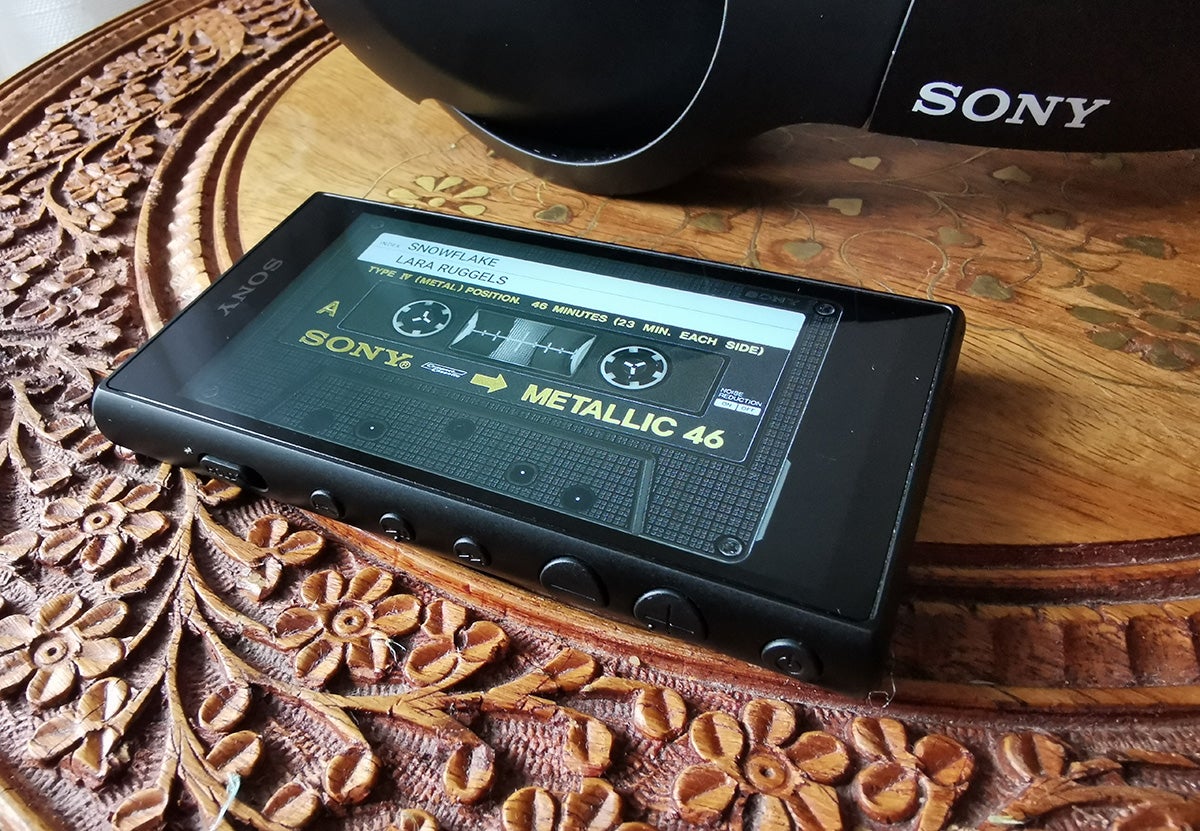
That doesn’t mean that the NW-A105 sounds bad. Not at all. I’ve tried it with Spotify, Tidal and Google Music and listened to the highest quality music offered by these streaming services. All of them sound amazing. The issue is that the quality of the streaming music is similar to that offered by any smartphone with a good audio chip (any high-end smartphone, basically.)
If you generally use streaming to listen to music, you can stop reading now. There’s no reason for you to buy the NW-A105 unless you’re obsessed with the idea of carrying around a very small and specific device to listen to music when you go running or something. And if that’s the case, you’re probably better going for a smartwatch with internal memory or one that’s compatible with Spotify.
Think of the Sony Walkman as an ultra-specialised phone made to listen to music with very high-quality sound. That means nothing on Spotify, Apple Music or Tidal. Rather, I am talking about uncompressed audio files. The NW-A105 supports MP3 with up to 320kbps, WMA with up to 192kbps, FLAC, AAC, MP4 (including Apple Lossless), AIF and DSD converted to PCM.
Ups and downs with the audio apps
The Sony Walkman comes with three specific applications. The first one is the music player itself, which supports the formats mentioned above. There’s not much to say about it. It’s essentially the same music player included in the previous Walkman devices, except that in the NW-A105 it’s been converted into an Android app. It lets you select music from wherever you have it stored, create playlists and choose tracks according to album, artist or sound quality. It’s simple and easy to use.
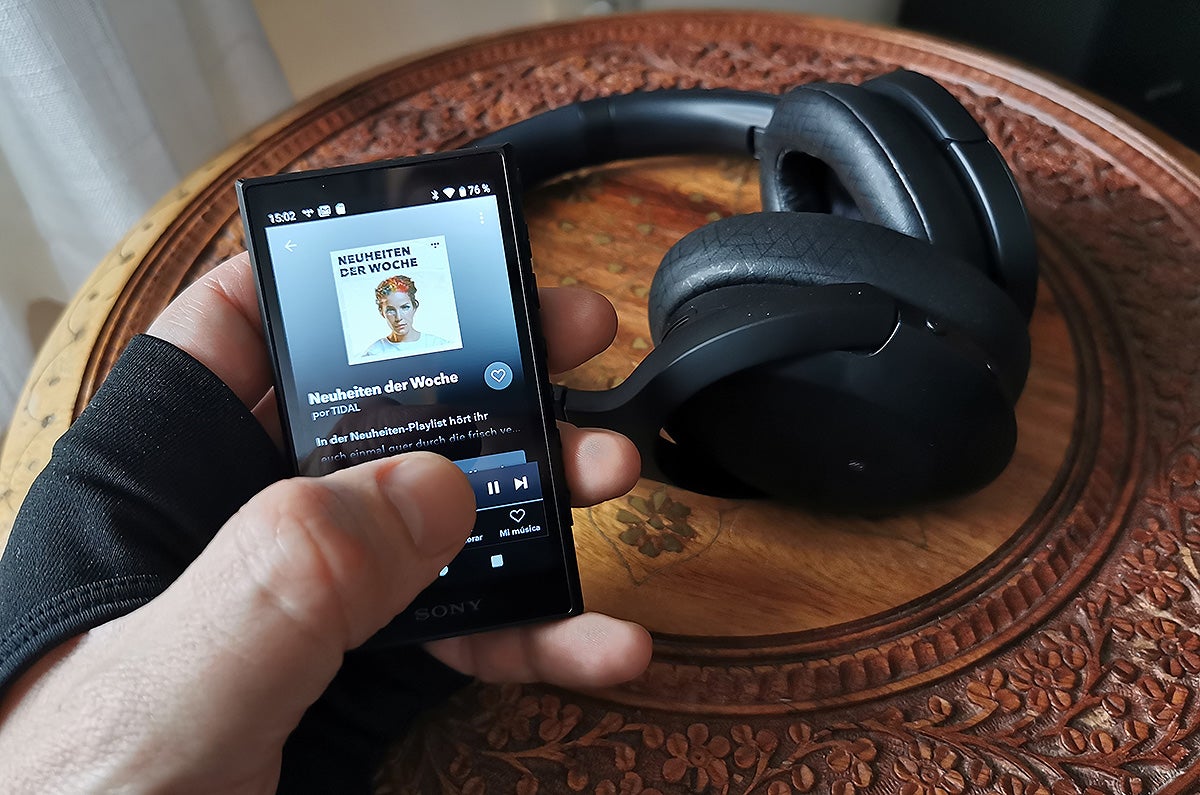
The second native application is kind of a joke. It’s called Ambient Sound and Noise Cancelling Function. In order words, it’s the control centre for the device’s noise-cancelling features. New questions arise: How can a Walkman offer noise cancellation as a feature separate from the headphones? What if the headphones can’t cancel noise? After trying to activate the feature with various different types of headphones without luck, I started to look for an explanation online. I found it on the Head-Fi forum.
The thing is that this application only works for a specific type of headphones that Sony doesn’t sell outside of Japan. Sony confirmed to us that the needed model is the IER-NW510N. If you use a pair of Sony noise-cancelling headphones like cheaper WH-XB900N or top of the line MH-1000XM3, you can use the amazing Sony Headphones Connect application to manage noise cancellation. The fact that Sony still installs the application for its Japan-specific headphones in U.S. or Europe devices, which is where we tried out the NW-A105, is a bit absurd.
The last app Sony offers in the NW-A105 is Sound Adjustments, which is a control centre with various screens that you can slide left and right. Each screen has a different setting, but all of them have a common denominator: They don’t work with Bluetooth headphones. This means that the advanced settings only available when you use corded headphones. The settings are as follows:
- Equaliser: This allows the user to customise the sound according to their personal preferences or to choose between seven equaliser settings. It’s the same equaliser system that’s used in the Sony Headphones Connect application.
- DSEE HX: This feature is supposed to improve the sound quality of a CD and transform it into high-definition sound.
- DC Phase Linearizer: This adjusts low-frequency audio so that it can reproduce the audio characteristics of analogue amplifiers.
- Dynamic Normalizer: This feature ensures the volume levels are the same for all songs.
- Vinyl Processor: As the name indicates, this feature is supposed to recreate the sound of traditional vinyl records.
- ClearAudio+: This improves the processing of the digital signal.
These settings are the kind that will keep you busy all morning while you try to figure out the differences between them. Not one of those settings is essential, except for the equaliser. In general, I get the feeling that the only two applications you need when you use the NW-A105 are Music Player and Sony Headphones Connect (if you have Sony headphones.) If you don’t have Sony headphones, you’ll need the Android application associated with your specific brand.
Connections
When it comes to wireless connections, the NW-A105 allows you to connect with other devices (mainly headphones) via NFC and Bluetooth. You can use wifi for everything else, but it doesn’t have a slot for SIM cards. At the beginning, I called it a phone, and that’s mainly because I’ve been using it as such (it should be noted that I use a phone for everything except calling and sending text messages.)
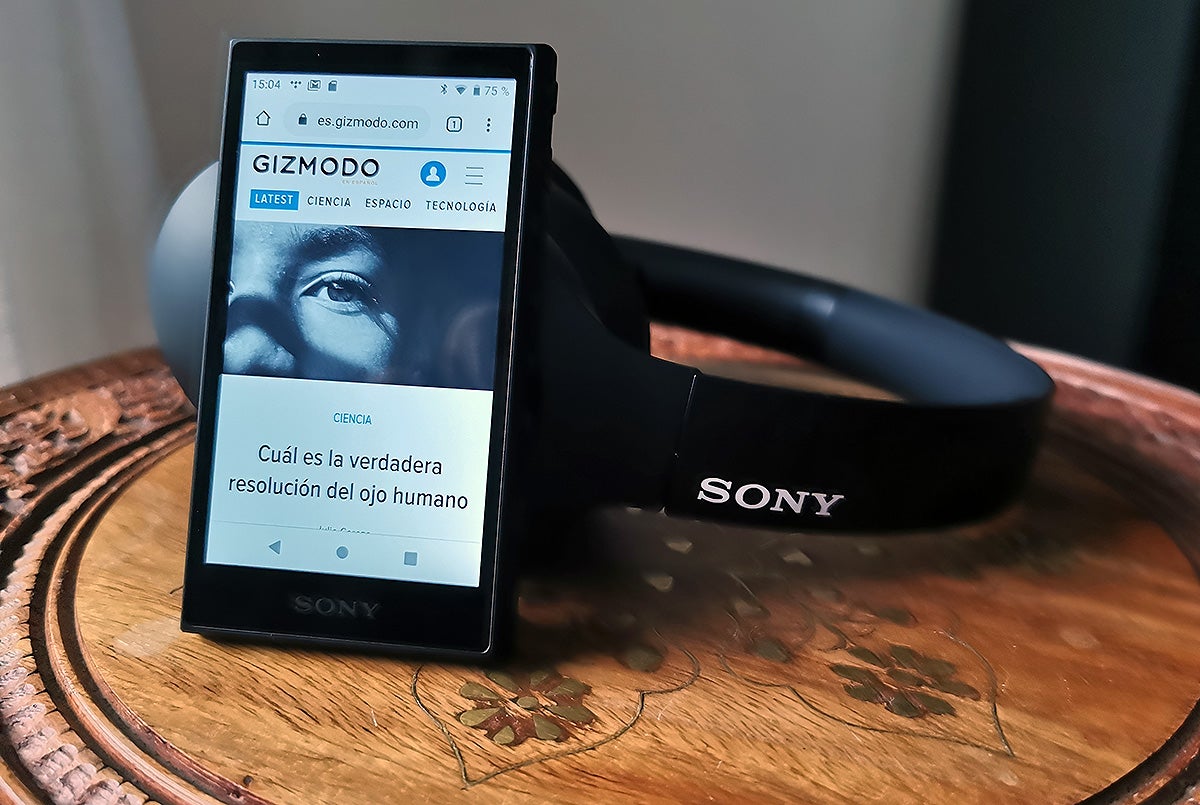
You can use the NW-A105 as if it were a phone and have it do pretty much anything you need, except any functions that depend on cellular service. (For instance, you won’t be able to install WhatsApp, but you can install Telegram.) It has Android 9.0 installed, which means that you can cram into it all the applications you want and use them with wifi. In a way, it’s perfect to take on vacation to ensure that you’re only connected when you’re around an open network.
When it comes to music support, the NW-A105’s Bluetooth component doesn’t disappoint. It supports A2DP, AVRCP, SPP, OPP and DID with aptx, aptx HD, SBC, LDAC and AAC codecs. This sea of acronyms can be summarized in one sentence: If you choose a good set of headphones, you won’t have any problems listening to high-quality music. But, of course, that’s the key for basically everything.
Choosing a pair of headphones for the NW-A105
The NW-A105 doesn’t include headphones. This, at first glance, doesn’t make sense, but it is, in fact, a very wise decision. As I said before, this device was created for a very specific audience group, a group that normally already has its own high-end headphones. Not to mention that in order to fully appreciate the sound that comes out of the NW-A105, you can’t just use a cheap pair of headphones like the ones that come with most smartphones. Sony would have to include a pair of higher-end headphones, which would drastically increase the cost of the Walkman. Even if it did do that, it would still have to deal with people complaining because they don’t like the headphones that come with the NW-A105.
Sony probably did the maths and concluded that it was better not to include headphones at all in the box in order to keep the price low. That leaves the user with one question: What headphones should I pick?
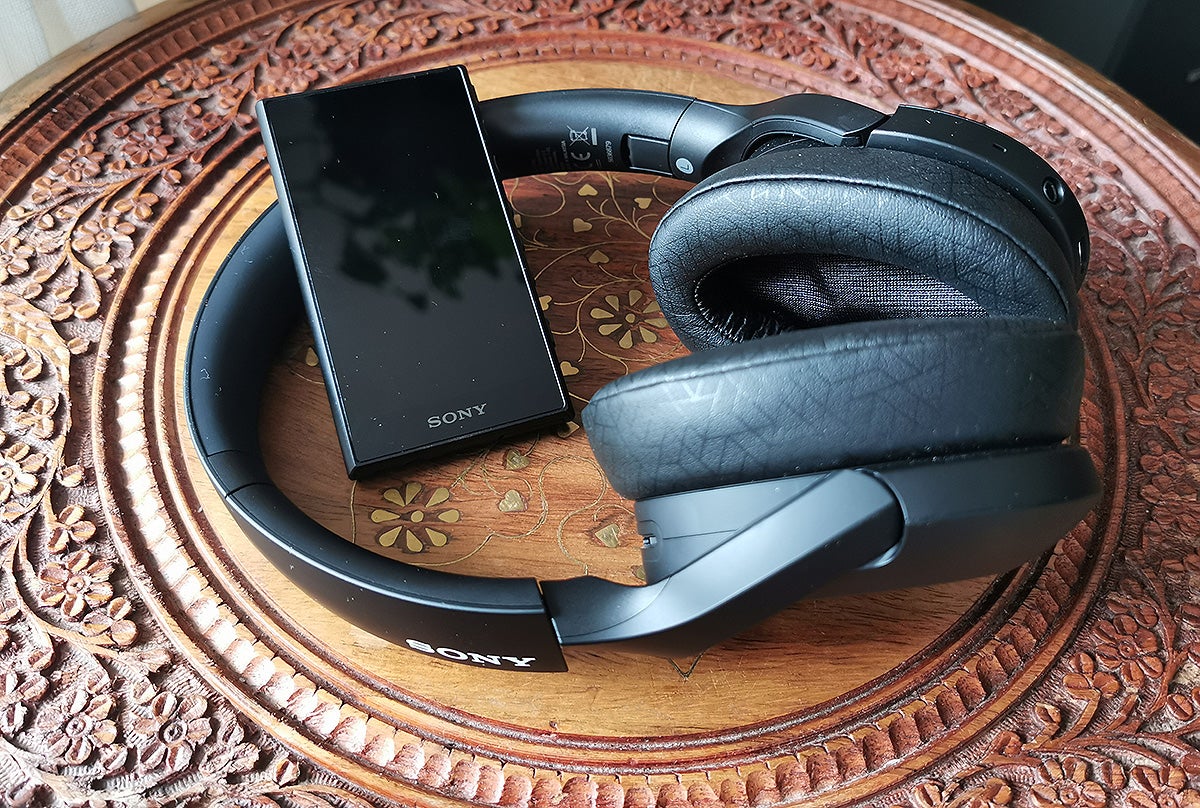
It’s an important decision. If you choose corded headphones, any pair that has a good frequency range (the connector supports between 20 and 40,000 Hz) and that has a sound you like could work. In fact, corded headphones are the ideal choice for this Walkman because they help you save battery, avoid problems with the quality of high-definition audio and ensure that you can use all of the sound adjustments in the native application.
However, if you want to use wireless headphones, Sony recommends you use the new WH-H910N, which is the model that the company lent us to write this review. They’re good headphones, but I like the sound from the Dali iO-6 or the Skullcandy Crusher ANC headphones a lot more. The biggest thing to take into account here is that the NW-A105’s internal amplifier is not very powerful. Its maximum output is 35+35 kilowatts and it has a resistance of 16 ohms. As a reference, the ZX-300, which is an older high-end model, has a 50+50 output with a mini-jack connector and 200+200 with the balanced connector.
All of this simply means that the Walkman NW-A105 sounds a little soft. Because of this, if you use it with headphones that produce a soft sound, it might not be ideal. If you use corded headphones, you can fix this with a portable amplifier like the FiiO Q1. But this means increasing your out-of-pocket cost for a device that already has a high overall price too.
Android: 1. Battery: 0
Out of all the NW-A105’s shortcomings, none is more annoying than its battery life. Perhaps it’s because I’m used to smartphones, but the new Walkman’s battery life is just too short. The main problem is the combo between Android and the wifi connection. Case in point: Just leaving the Walkman idle overnight (with the wifi connection activated but without using the device) consumes between 30-40% of its battery. I only activated notifications on two applications (Gmail and Telegram), and I barely received any messages overnight.

This problem has been partially solved by a new firmware update (the Walkman now consumes less battery when it’s idle), but the battery still doesn’t last long.
Sony has already made a big mess trying to explain the Walkman’s battery life on its official international websites. According to its long and very confusing explanation, the battery lasts between eight and 26 hours. Factors that affect battery life include audio quality, whether or not you have the noise cancellation system activated and which connections (Bluetooth or wifi) are being used.
In my experience, the battery life is closer to eight hours than to 26. If I leave the Walkman in Aeroplane mode and only use local files, it’s possible to listen to music on the device for about 15 or 16 hours. The moment you start to use wireless connections, the battery life decreases drastically to about six or seven hours.
It’s a significant decrease when compared to the previous Walkman models, but it’s the price we have to pay to have Android on a dedicated music player. If you take it with you on a trip, you’ll probably need an external battery. If you don’t have one, you’ll probably need to charge it every night.
Verdict
With the NW-A105, Sony has tried to modernise its previous models (the NW-A45 and the A55) by adding Android to create a Walkman that is attractive for the general public. It’s true that the small NW-A105 can now be used for so many things that it’s tempting to leave your phone at home and take the NW-A105 with you on vacation. The problem is the battery. It lasts very little, especially if you use the connections, which is precisely what Android invites you to do. Additionally, it makes no sense to limit the quality of streaming music. That being said, the audio quality of music files is excellent. My only question is whether people actually care about that nowadays.
README
- It’s a great travel device that will keep you from being distracted by your phone.
- Battery life leaves a lot to be desired.
- Music quality on streaming services is hamstrung. Bring your own music files.
- Range of inputs and file supports is incredible.
- Please don’t buy this if you just use Spotify.